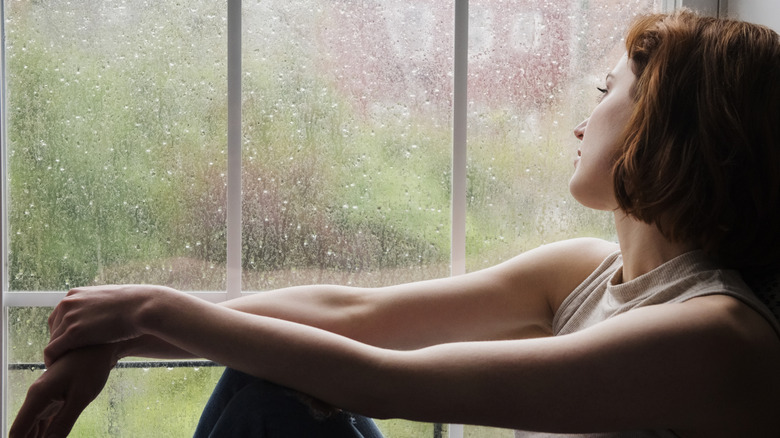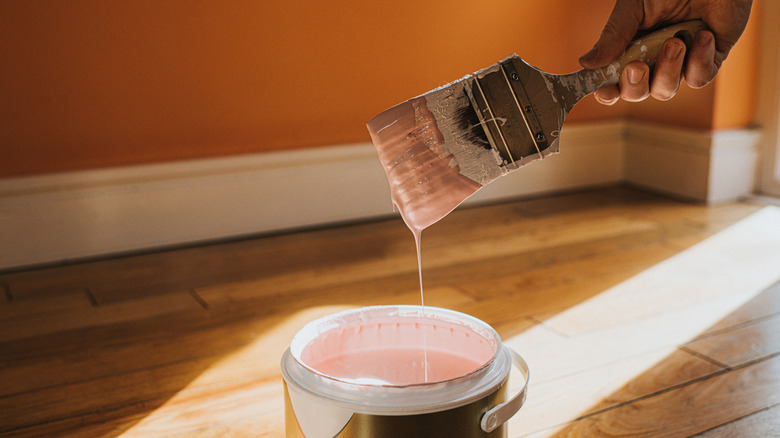Why Rainy Days Are The Worst Choice When Painting Wood Floors
Painting your hardwood floors is a great and cost-effective way to extend their life and give them a brand-new, attractive look. While you can't control the weather, you should be aware of the weather conditions when taking on this job. Rainy or humid days are the worst days for painting wood floors because moisture in the air stops the water molecules in the paint from quickly evaporating. This significantly slows down drying time, and you'll likely experience uneven finishes and poor adhesion to the wood floor.
Painting on humid days can even present safety issues, as it increases the risk of slips — and, if you're working with power tools, shocks. Since you must have proper ventilation when painting, leaving open windows or doors during a rainstorm could let rainwater onto your wood floors, causing them to become slippery. If not wearing the proper footwear, simply walking across the wood floor to paint a new section could pose a danger, so inspecting the flooring as you work is important. Also, if you are using a power tool such as a spray paint gun, you're putting yourself at risk of an electric shock. If the precipitation is heavy enough that getting a drizzle on your freshly painted floor can't be avoided, it's probably best to save your project for a non-rainy day.
Take a few extra steps if you have to paint on a rainy day
The biggest issue that rain causes when painting wood floors is the extra moisture in the air; this directly and significantly slows down the drying time of the paint. This in itself is a nuisance, as no one wants to sit and see how long it really takes for paint to dry. However, that extra drying time can also severely compromise your finish. Its initial look may not be what you were going for, and over time, the paint might develop bubbles, begin to flake, or even start to peel off in chunks.
While rainy days aren't ideal for doing a DIY paint job, you can take a few steps to help minimize damages and risks if your schedule won't allow you to delay the task. Chief among these: use a dehumidifier to help reduce the air's moisture content in the room you're painting. Though it may seem counterintuitive, it's best to increase ventilation to promote air circulation, so leaving extra windows open can help. (Remember: Weather conditions aside, you must always properly ventilate rooms when painting.)
Additionally, you can choose a fast-drying paint to help mitigate the problems that extra moisture creates; stay away from oil-based paints in favor of latex or acrylic. Keeping this in mind when considering everything you need to know before painting your floors will help to make your project quick and easy to complete.

